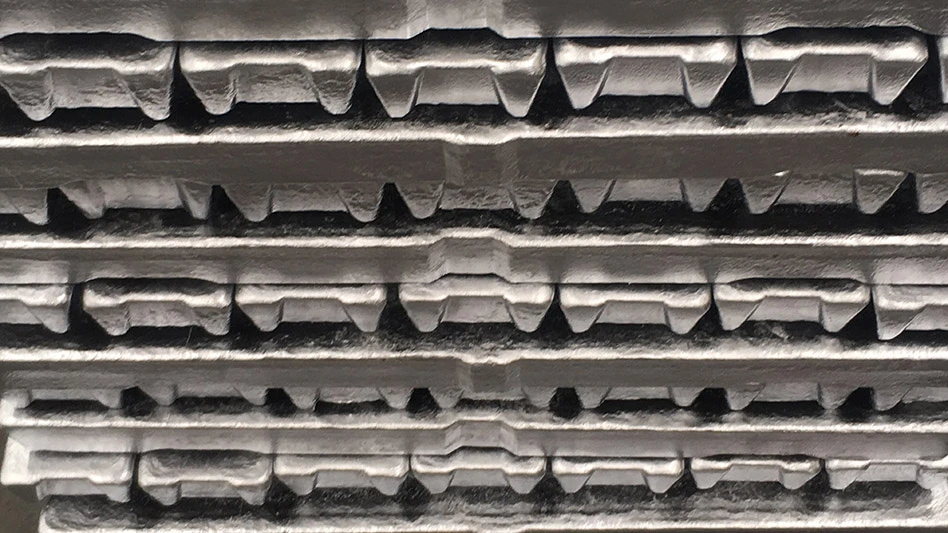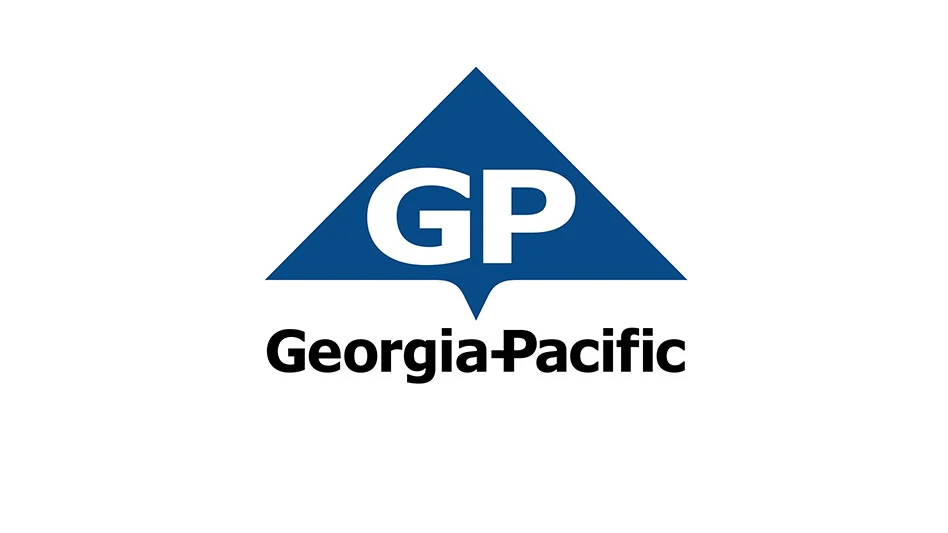The construction and demolition (C&D) market in Canada is glowing with renewed brightness, thanks to increased tipping fees and a generally healthy economy. With some exceptions, there is little regulation driving the business. Instead, tip fees and published guidelines propel C&D activity.
Most recycling in Canada takes place near large urban centers because that’s where most of the building is going on. In addition, tipping fees are higher in built-up regions, and both opportunities and the incentives to reuse material are greater.
According to federal government figures, slightly more than 5 percent of the waste received by landfills is generated by the residential housing industry from demolition, renovation or new construction. Another 9 percent of the waste is from commercial construction.
Because of Canada’s Northern climate, the C&D business is seasonal. In addition, the composition of the C&D waste stream varies seasonally, as well as from location to location. The overall economic climate also has a major impact on construction, so C&D swings with building booms and busts.
Government does play a role, but in most cases it is more in the area of charging various tipping fees than outright regulation. In Toronto, Sean Teperman of Teperman Wrecking notes that 10 years ago the Toronto municipal landfill price was $20 a ton. It doubled to $54, re-doubled to $120, then climbed to $158 in six years’ time. Then, it was halved to $75 and now is in the $50 area. Such whip-sawing, while not typical everywhere, made C&D disposal a strange game in Canada’s most populous area.
While throughout the provinces the single largest factor in recycling of C&D material is the cost of landfilling, in other areas costs are so low that promoting recycling becomes a problem. "Calgary has very low dump rates (tip fees) so it is difficult to recycle competitively," says Shelly Wearmouth, co-owner of Wearmouth Canada Inc., Calgary, Alberta. She also is an international director for the National Association of Demolition Contractors. Her firm recycles drywall and wood.
The larger the city, the more likely it is that C&D recycling will be profitable there. "Calgary is not where Edmonton is," she continues, noting the larger urban areas are more receptive to recycling. "Our company has 40 years in the business. We looked at prices over that time. The numbers showed a direct correlation of tipping fees and what we recycled."
A further complication is some cities’ use of tipping fees to support other government functions. In Ontario, for example, only a tiny fraction of landfills are privately owned. So, unlike the United States, those publicly managed facilities are subject to political and economic pressures. Until two years ago, the National Democratic Party controlled the Toronto area, and Ontario was big on the 3-Rs. Then NDP went out of power, and now the government is no longer as much in the forefront of the waste business.
The result in eastern Canada is C&D contractors who are not sitting at home when it comes to disposal of the final fraction of C&D waste. A fair amount of material is shipped into New York, Michigan, Pennsylvania and Ohio where material can be landfilled by the yard and not by the ton as in Ontario. Compacting material makes it economical for C&D operators like Paul Greenspoon of Greenspoon Brothers Ltd., Toronto, to haul debris out of Canada and into the United States.
"I like the way they run landfills in the United States," says Teperman. "They are independently owned, have liners, and are run like a business." Of course, he also appreciates the $42 to $48 per ton disposal cost (which includes a $25 tip fee and shipping) as opposed to the $50 local charge. His only concern is the lower weights allowed on many U.S. highways – a 20-ton trucking limit puts a crimp in the volume which can be hauled per run. Michigan, however, will allow up to 35 tons per load on its highways, making each run more profitable.
C&D REMAINS STRONG
The C&D business has been good across Canada. "For the last four years, volumes have been strong," says Greenspoon. He works with manufacturing, oil and chemical companies and says the recent business drive to consolidate such facilities is driving the C&D business in his area. "It’s been very positive for demolition," he says. Although the markets in the Toronto area took a breather early in the spring, Greenspoon says he expects things to break loose again in the next two to nine months.
In addition to tip fees, Greenspoon sees property owners’ desire to reduce site maintenance and taxes as two other drivers in the C&D market. A third-generation demolition outfit, over the years Greenspoon has seen the total time spent on projects drop from between 3 and 18 months to between 3 to 18 weeks, he says. He is able to recycle between 90 percent and 98 percent (by weight) of most projects. The remaining few percent usually is asbestos, PCBs, or other material which requires special handling. Investment in mobile crushing equipment – which allows processing at $6 per yard – and grapples, shears and pulverizers allows him to be creative in diverting material to paying markets and out of landfills.
In most areas, there are few regulations that affect Canadian C&D operations, outside of restrictions on hazardous materials like asbestos. Because of less restrictive provincial regulations on dry-disposal sites and higher disposal costs at regulated MSW landfills, most C&D materials can be dumped in ordinary landfills. However, in British Columbia, there are bans on disposal of drywall in landfills, mainly based on the fear of hydrogen sulfide generation. While British Columbia has an active drywall recycling industry, it is uneconomical for companies in the provinces east of British Columbia to truck the material long distances, and much of it ends up being landfilled.
The ban did not stop firms in British Columbia from trucking drywall out to Alberta, however. For some time, notes Derek Richmond, projects manager for Action on Waste, Edmonton, Alberta, gypsum was welcomed in area landfills. This was because it was useful for neutralizing oil patch waste. While much less wallboard is being shipped in now, Richmond says, Edmonton still accepts it in landfills.
Currently, Action on Waste is working on determining recycling rates and looking at alternative uses. Some landfills have specified areas within compounds for gypsum board; others commingle it with general waste. Liners are not required in Alberta for wallboard landfills.
Another area with strong regulations in place is Halifax, Nova Scotia. There, a review of the Nova Scotia Environmental Act prompted a clamp-down on illegal dumping. The result was more materials coming into landfills and a greater awareness of the volume of C&D materials being landfilled, according to Jennifer Corson of The Renovator’s ReSource in Halifax. Her firm takes doors, windows, bathtubs and other material and re-sells it to the market.
Tipping fees promptly went from $60 to $100 per ton. The metro Halifax landfill site banned wood, aggregates and metals. A ban on drywall is expected. The result was an increase in interest in recycling shingles, paving, concrete, metals, wood and other C&D fractions.
"On the reuse side, we are seeing an increase in interest since those bans were put in place," Corson says. Where her firm was the only one working four years ago, today there are four companies. "I think the future is bright," adds Corson, who also chairs the Used Building Materials Association, Winnipeg, Manitoba. She finds that the situation is the same across Canada, and sees a lot of parallels with the U.S. market, as well. "The scope of materials is a bit different in Halifax – we are dealing with many older buildings – but the amazing growth pattern appears to be the same."
"The whole issue (of C&D recycling) is back in the sunshine," agrees John Emery, president of John Emery Geotechnical Engineering, Etobicoke, Ontario. "It was big for a while in the late 1970s and early 1980s. Now it is popular again. There is money in it both for the people doing the recycling and for those on the technical end."
Emery notes that the Maritimes, Quebec and Ontario have active C&D recycling projects. Other urban centers like Winnipeg and Vancouver are promoting recycling projects. He says most of the interest he sees is coming, surprisingly, from new construction projects, not tear-downs. "That is because of the high cost of disposal," he says. "The idea is to minimize costs and use whatever they can."
Smaller communities, lacking economies of scale, are behind because they can't muster large quantities of material required to make recycling economical. But where there is good volume, programs have proven C&D recycling can be successful.
PICC-UP PROGRAM
One such program to divert construction debris from new home projects ran in Edmonton, Alberta. According to Garry Spotowski, education programs coordinator with the City of Edmonton’s Asset Management and Public Works, the project was intended as a model which could be used across the country. Called Partners in Clean Construction or PICC-UP, its target was suppliers, tradesmen, developers and others in the home building business. It was the first project in Canada to merge federal, municipal, and industry in a comprehensive reduce, reuse, recycle residential construction project. The Canadian Mortgage and Housing Corporation (CMHC), the Edmonton Homebuilders Association and the city drove the project which ran two years ago.
Spotowski, whose background is in commercial waste reduction, says PICC-UP started with a small-scale study and was expanded to an entire subdivision. "We set up a recycling depot for the subdivision, treating it as a little village," he says. Five roll-off bins were put in a temporary gravel area. They collected cardboard, dimensional lumber, oriented strand board and plywood, drywall and general waste.
Overall, the PICC-UP program succeeded in reducing the amount of waste sent to the Edmonton landfill from 1,454 kilograms (about 3,200 pounds) per 100 square meters of construction to 1,157 kilograms (2,500 pounds). Although one builder reduced the amount of dimensional lumber going into the waste stream by 57 percent, the average drop on all materials was 20 percent. Dimensional lumber was the largest fraction, averaging 43 percent. Overall, there was a savings of 813 kilograms of waste per house and an additional 835 kilograms waste recycled per house. Eliminating mixed waste from the recyclable materials resulted in savings of $32 to $72 per metric ton.
Christina Seidel, executive director of the non-profit Recycling Council of Alberta, calls the Edmonton project "the most interesting of its kind in Western Canada." The goal, she says, is to change the way developers do business. "When a new subdivision is built, recycling people are there to divert the construction materials," she says.
"It would work well in most places, depending on landfill rates," says Spotowski, noting that such a program takes a fair amount of organization and teaching on-site. The Edmonton project had its greatest success in reducing wood waste, but a significant amount of other materials were recycled as well. A video on the project is available.
In much of Canada, there is little in the way of regulation for handling C&D debris. Instead, there are "specifications" which call for recycling or reusing a certain percentage of materials on the job. A bid proposal drawn without meeting the specifications will not be accepted, so there is a powerful economic incentive going into the job to recycle the materials. With the exception of the wood fraction, materials recovered from demolition projects generally are incorporated into new construction.
In her area, Wearmouth is trying to promote long-term thinking at both the city and provincial levels. "A properly conducted tear-down requires planning," she says. "You can’t just go on the basis of low bid wins. It takes time to cost out a project and plan for proper disposal of materials."
She estimates there are about 30 million square feet of office space in downtown Calgary. A ballpark figure for demolition would be about $75 million dollars – necessitating the hauling of 100,000 loads, or two million tons of waste, to the landfill. That clearly points out the need for recycling, Wearmouth says.
Greenspoon says the decision to increase tipping fees had two effects: people began to think about reduction and recycling, and – just like in Halifax – illegal dumping skyrocketed. "I believe the province stimulated industry to look at other applications by increasing tip fees," he says. "The companies I work with really care about their communities, but the economic incentive to recycle is what moved the market."
HIGHWAY PROJECTS
One good example of the government’s approach to providing guidelines, not regulations, is the "Waste Free Highway," a study of reducing waste in road projects. Balu Iyer, senior environmental engineer in the environmental office of the Ontario Ministry of Transportation, St. Catherines, is the project director. "We don’t want to dictate what is done," he says. Rather, the goal is to outline available options. "This is a list of ideas, of alternatives, ranked by economic, technical and environmental points of view."
Iyer notes the goal is to reuse all of the materials from construction and rehabilitation projects. Consultants looked at the materials generated in highway projects and listed recycling and reuse options in order of preference. Asphalt can be re-used in highway surface; or, it could be used to build up embankments. Iyer says that not all the options presented by the consultants necessarily will become recommendations, depending on what the department feels will work and will be environmentally safe. Currently, the document is about 80 percent complete. Iyer expects the department to publish a complete report in the end of 1997.
Alberta Environmental Protection (AEP), the provincial government body, is bullish on increased recovery rates for concrete and asphalt in the coming years. For one thing, supplies of native aggregate are diminishing. AEP notes that it may make economic sense to stockpile sources of concrete and asphalt since the material, after processing, can be substituted for or blended with virgin aggregate.
Expect gradual, but on-going, regulation to spread from the coasts inland in Canada over the coming years. In some cases, it may provide an additional spark for the C&D recycling business.
Teperman Wrecking, a family-owned C&D recycling operation for 85 years, had closed its recycling lot for about a year. However, the yard is reopening in June since interest has been so strong, according to Sean Teperman. While their C&D efforts remain machine-oriented, the company continues a strategy of advertising heavily and having people come to a wrecking site to remove the fraction they need. The rest of the structure is torn down and hauled out.
Given a strong domestic economy and continued high tipping fees in the major urban centers, the outlook for the construction and demolition business in Canada appears bright.
The author is an environmental writer based in Strongsville, Ohio.
First in a two-part series on construction and demolition debris recycling. The second will appear in October 1997.

Explore the June 1997 Issue
Check out more from this issue and find your next story to read.
Latest from Recycling Today
- OnePlanet Solar Recycling closes $7M seed financing round
- AMCS launches AMCS Platform Spring 2025 update
- Cyclic Materials to build rare earth recycling facility in Mesa, Arizona
- Ecobat’s Seculene product earns recognition for flame-retardant properties
- IWS’ newest MRF is part of its broader strategy to modernize waste management infrastructure
- PCA reports profitable Q1
- British Steel mill subject of UK government intervention
- NRC seeks speakers for October event





